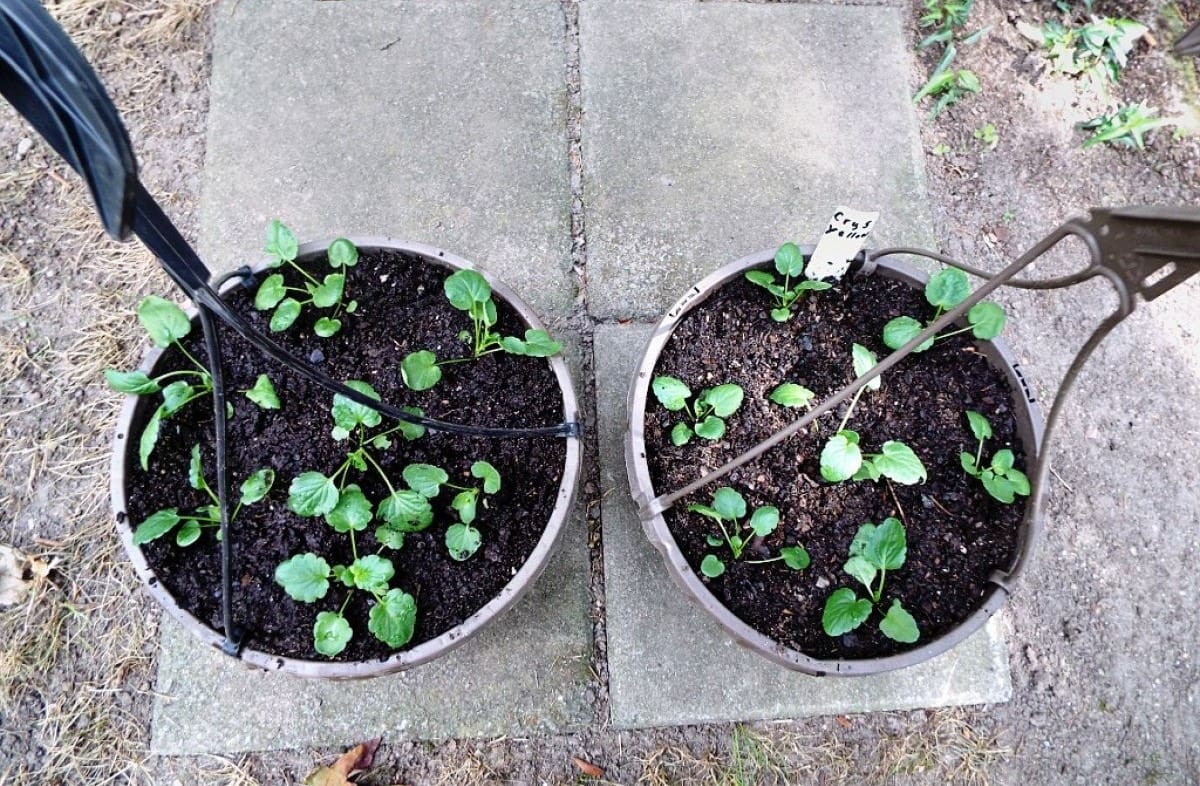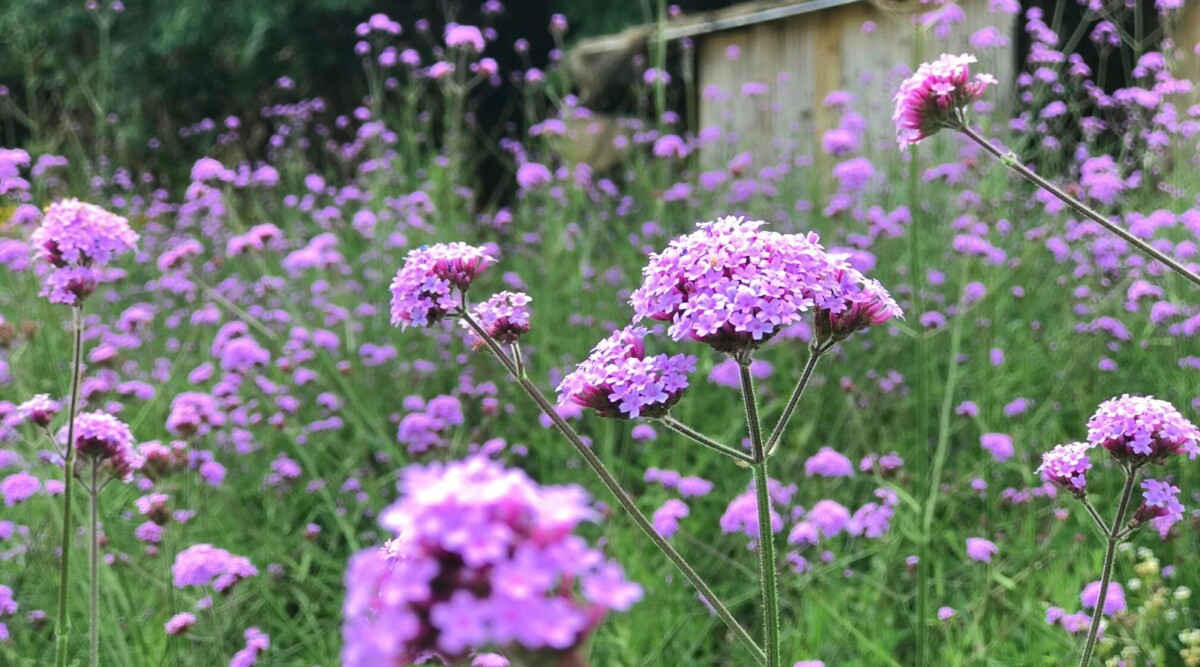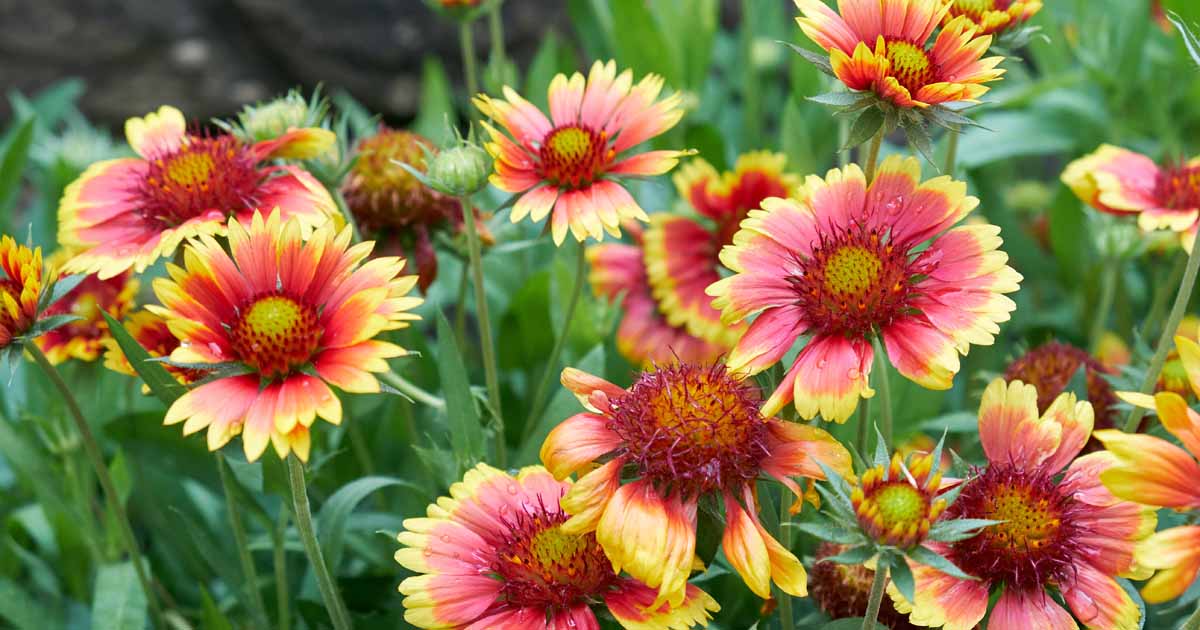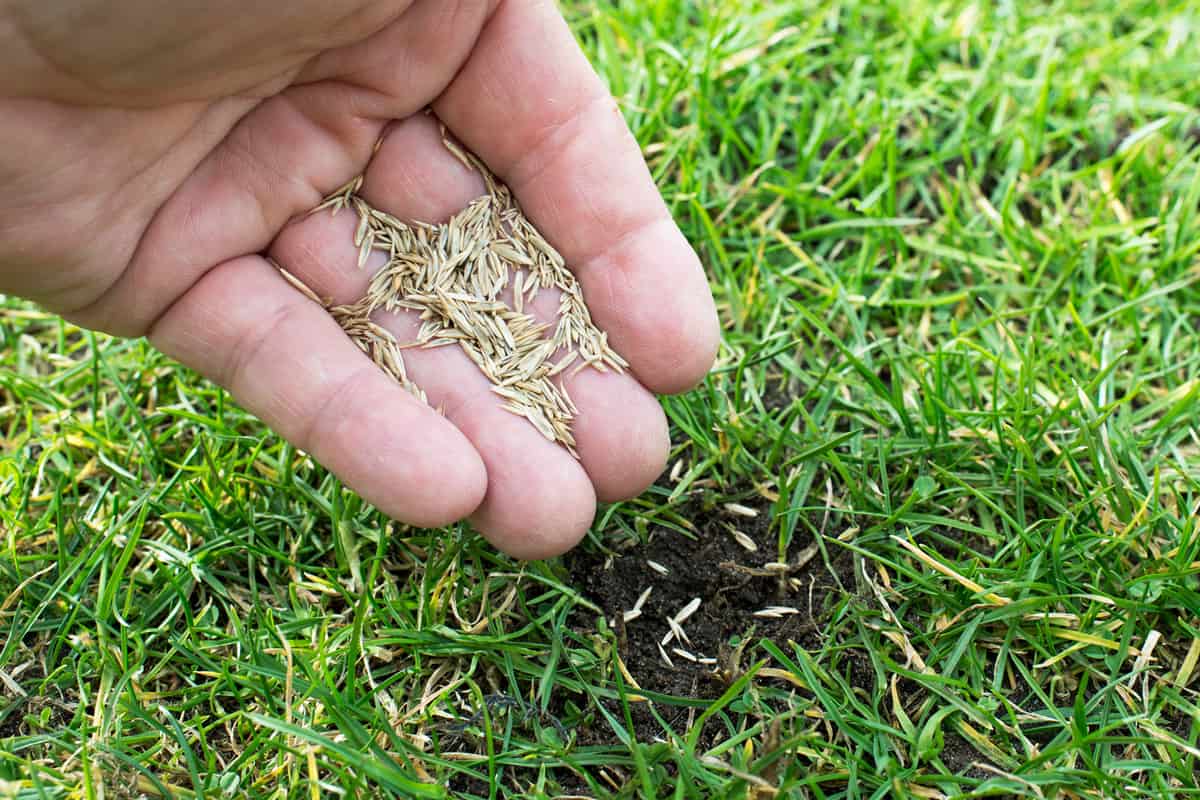Home>Garden Essentials>When To Plant Pansy Seeds


Garden Essentials
When To Plant Pansy Seeds
Modified: May 6, 2024
Looking to plant pansy seeds in your garden? Discover the right time to plant pansy seeds for a blooming and vibrant garden all season long.
(Many of the links in this article redirect to a specific reviewed product. Your purchase of these products through affiliate links helps to generate commission for Storables.com, at no extra cost. Learn more)
Introduction
Welcome to the wonderful world of gardening! If you have a green thumb or simply love the beauty of flowers, then planting pansy seeds is a delightful way to add color and charm to your garden or outdoor space. Pansies, known for their vibrant colors and delicate petals, are a popular choice for both experienced gardeners and beginners.
Before you start planting pansy seeds, it’s important to understand the factors that can affect their growth and ensure that you choose the best time for planting. Additionally, preparing the soil properly and providing the necessary care will help your pansy seedlings thrive.
Throughout this article, we’ll explore the ideal time to plant pansy seeds, the steps involved in planting them, and how to care for your seedlings to ensure a successful and beautiful garden.
So, let’s roll up our sleeves, don our gardening gloves, and dive into the world of pansies!
Key Takeaways:
- Planting pansy seeds at the right time and in well-prepared soil is crucial for their success. Consider factors like climate, sunlight, and soil quality to create an optimal environment for your pansy seedlings.
- Once your pansy seeds have germinated, provide proper care by watering, fertilizing, and protecting them from pests and diseases. Enjoy the process and watch your pansies blossom into beautiful flowers.
Read more: When To Start Pansy Seeds
Factors to Consider Before Planting Pansy Seeds
Before embarking on your pansy planting journey, it’s important to consider a few factors that can greatly influence the success of your garden. Understanding these factors will help you make informed decisions and create an optimal environment for your pansy seedlings to thrive.
- Climate: Pansies are cool-season flowers that prefer moderate temperatures. They thrive in regions with mild winters and can tolerate light frost. If you live in an area with harsh winters or extremely hot summers, you may need to adjust your planting schedule or provide additional protection for your pansies.
- Sunlight: Pansies love the sun but also appreciate a bit of shade during the hottest part of the day. They thrive in full sun to partial shade, so choose a location that receives at least 4-6 hours of direct sunlight. This will ensure healthy growth and abundant blooms.
- Soil Quality: Pansies prefer well-draining soil that is rich in organic matter. Before planting, assess the quality of your soil and make any necessary amendments. Incorporating compost or peat moss can improve soil structure, providing essential nutrients and promoting good drainage.
- Watering: Pansies have moderate water needs. They prefer evenly moist soil, but overwatering can lead to root rot and other diseases. It’s important to strike a balance and avoid both underwatering and overwatering. Regular watering, especially during dry spells, will keep your pansies healthy and vibrant.
- Pests and Diseases: Pansies can be susceptible to certain pests and diseases, including aphids, slugs, and powdery mildew. It’s important to keep an eye out for any signs of infestation and take appropriate measures to protect your plants. Regular inspections, proper hygiene, and natural pest control methods can help prevent and manage these issues.
- Companion Planting: Pansies are highly versatile and can be paired with other plants to create stunning and complementary displays. Consider companion plants that share similar growing conditions and have compatible root systems. Marigolds, alyssum, and lobelia are popular choices that pair well with pansies.
By taking these factors into account, you can provide an optimal environment for your pansy seedlings, setting them up for success and ensuring a beautiful and thriving garden.
Best Time to Plant Pansy Seeds
The timing of planting pansy seeds is crucial for their successful germination and establishment. Pansies are cool-season flowers and thrive in moderate temperatures. The best time to plant pansy seeds depends on your specific climate and the desired bloom time. Here are some guidelines to help you determine the ideal planting time:
- Spring Planting: If you want your pansies to bloom in spring, you can start planting the seeds indoors about 8 to 10 weeks before the last expected frost date in your area. This will give them enough time to germinate and establish strong roots. Once the danger of frost has passed, you can transplant the seedlings into your garden.
- Summer Planting: Pansies can also be planted in summer, but it’s important to choose heat-tolerant varieties and provide sufficient shade and moisture to protect them from the scorching heat. Start the seeds indoors around 12 weeks before the desired planting time, and transplant the seedlings once the temperatures have cooled down.
- Fall Planting: Fall is an excellent time to plant pansies, as they thrive in cooler temperatures. Aim to plant pansy seeds 6 to 8 weeks before the first expected frost in your area. This will give the seedlings time to establish before the cold weather sets in.
- Winter Planting: In regions with mild winters, pansy seeds can be planted in late winter for early spring blooms. This is typically done in areas where the ground does not freeze and the temperatures remain above freezing. Ensure proper protection for the young seedlings during any extreme weather conditions.
It’s important to note that these timelines are general guidelines, and you should always consider your specific climate and regional conditions. Refer to your local agricultural extension office or trusted gardening resources for more precise information on the best planting times in your area.
By planting pansy seeds at the appropriate time, you can maximize their growth potential and enjoy a vibrant and blooming garden.
Preparing the Soil for Planting Pansy Seeds
Proper soil preparation is essential for creating an optimal growing environment for your pansy seeds. Well-prepared soil provides the necessary nutrients, good drainage, and aeration that pansies need to thrive. Follow these steps to prepare the soil for planting pansy seeds:
- Clear the Area: Begin by clearing the planting area of any weeds, rocks, or debris. This will create a clean and tidy space for your pansy seedlings.
- Loosen the Soil: Use a garden fork or a tiller to loosen the soil to a depth of about 6 to 8 inches. This process helps improve drainage and allows the plant’s roots to penetrate the soil easily.
- Amend the Soil: Pansies prefer well-draining soil that is rich in organic matter. Add compost, well-aged manure, or peat moss to the soil and mix it thoroughly. These organic amendments enhance soil fertility, improve moisture retention, and promote healthy root development.
- Test the pH: Pansies prefer slightly acidic to neutral soil with a pH range of 5.5 to 7.0. Test the soil’s pH level using a soil testing kit and make any necessary adjustments. If your soil is too acidic, add lime to raise the pH. If it’s too alkaline, add sulfur or other acidic amendments to lower the pH.
- Remove Large Clumps: Break up any large clumps of soil and remove rocks, roots, or other obstructions. Smoothing out the soil surface will provide an even and stable base for planting your pansy seeds.
- Water the Soil: Before planting, thoroughly water the soil to ensure it is evenly moist. Pansy seeds need moisture to germinate, and moist soil will facilitate the seedling’s establishment.
Once you have prepared the soil, it’s ready for planting. The well-amended and nutrient-rich soil will provide a solid foundation for your pansy seeds to grow into healthy and vibrant plants.
Pansy seeds should be planted in early spring or late summer for fall blooms. They prefer cooler temperatures and well-drained soil. Sow seeds directly into the garden or start them indoors 6-8 weeks before the last frost date. Keep the soil consistently moist for best results.
Planting Pansy Seeds: Step-by-Step Guide
Now that you have prepared the soil, it’s time to sow your pansy seeds and watch them transform into beautiful flowers. Follow this step-by-step guide to ensure successful planting:
- Select a Planting Location: Choose a location in your garden or containers that receives ample sunlight and has well-draining soil. Pansies thrive in full sun to partial shade, so find a spot that provides the ideal balance.
- Sow the Seeds: Gently sprinkle the pansy seeds evenly over the prepared soil surface. Aim for a spacing of about 6 to 8 inches between each seed. Don’t worry about burying the seeds, as they require light for germination.
- Press Seeds into Soil: After scattering the seeds, lightly press them into the soil using your hands or the back of a garden trowel. This will ensure good seed-to-soil contact, which is essential for successful germination.
- Water the Seeds: Give the newly planted seeds a gentle watering, ensuring that the soil is moist but not overly saturated. Use a fine mist or a watering can with a nozzle attachment to avoid disturbing the seeds.
- Label and Mulch: Place labels or markers in the soil to indicate the pansy variety and planting date. Adding a layer of mulch, such as straw or shredded leaves, will help retain moisture, regulate temperature, and suppress weed growth.
- Provide Care: Keep the soil consistently moist until the pansy seeds germinate, which usually takes around 7 to 14 days. Once the seedlings emerge, water them regularly, ensuring the soil remains evenly moist but not waterlogged.
- Thin out Seedlings: When the seedlings have grown a few inches tall and have established a few sets of leaves, thin them out to provide enough space for healthy growth. Remove the weakest or overcrowded seedlings, leaving only the strongest ones.
- Continue Caring for Your Pansies: As the seedlings mature, continue to provide care by watering, fertilizing, and protecting them from pests and diseases. Regularly remove spent blooms to encourage continuous flowering.
With proper planting and care, your pansy seeds will transform into vibrant plants, bringing color and cheer to your garden or containers. Enjoy the process and watch as your pansies blossom into beautiful flowers.
Read more: When To Plant Borage Seeds
Caring for Pansy Seedlings
Once your pansy seeds have germinated and the seedlings have emerged, it’s important to provide proper care to ensure their healthy growth and development. Here are some essential practices to follow when caring for your pansy seedlings:
- Watering: Pansy seedlings have shallow root systems, so it’s crucial to keep the soil consistently moist. Water them regularly, especially during dry spells, ensuring that the soil remains evenly moist but not waterlogged. Use a watering can or a gentle misting spray to avoid disturbing the delicate seedlings.
- Fertilizing: Pansy seedlings benefit from regular feeding to promote healthy growth and vibrant blooms. Use a balanced, water-soluble fertilizer diluted to half strength and apply it every two weeks. Be sure to follow the manufacturer’s instructions for proper application and dosage.
- Providing Sunlight: Pansies thrive in full sun to partial shade. Ensure that your seedlings receive at least 4-6 hours of direct sunlight per day. In hot climates, provide some afternoon shade to protect the plants from scorching heat.
- Thinning and Transplanting: As the seedlings mature and grow several sets of leaves, thin them out to provide enough space for healthy development. Remove the weakest or overcrowded seedlings, leaving only the strongest ones. If you initially planted them close together, you may need to transplant some of the seedlings to other areas of your garden to allow them ample space to grow.
- Deadheading and Pruning: Remove spent blooms regularly to encourage continuous flowering and prevent seed production. Pinch or snip off the faded flowers just above a set of leaves or node. This process, known as deadheading, redirects the plant’s energy into producing more blooms rather than seed production. Additionally, pruning leggy or straggly growth will help maintain a compact and bushy plant shape.
- Protection from Pests and Diseases: Keep a close eye on your pansy seedlings for any signs of pests or diseases. Common issues include aphids, slugs, and powdery mildew. Regularly inspect the leaves and stems, and take prompt action if you notice any infestation or infection. Use natural pest control methods, such as handpicking pests or using a gentle insecticidal soap, and ensure proper hygiene and ventilation to minimize the risk of diseases.
By following these care practices, you can nurture your pansy seedlings into healthy, robust plants that will reward you with a vibrant display of colorful blooms. Enjoy the process of tending to your pansies and watch them flourish in your garden.
Common Issues and Troubleshooting
While pansies are generally hardy plants, they may encounter some common issues and problems. Understanding these issues and knowing how to troubleshoot them will help you keep your pansies healthy and vibrant. Here are some common problems you may encounter while caring for pansy seedlings:
- Pests: Pansies can be susceptible to pests such as aphids, slugs, and snails. Inspect your plants regularly and take immediate action if you notice any signs of infestation. Handpick aphids or use a gentle insecticidal soap to control them. Set up beer traps or use organic slug and snail bait to deter these slimy critters.
- Diseases: Pansies can be prone to diseases such as powdery mildew, leaf spot, and root rot. Ensure good airflow around the plants by avoiding overcrowding and allowing enough space between seedlings. Water plants at the base to prevent fungal growth on the foliage. If necessary, apply a fungicide according to the product’s instructions to control the spread of diseases.
- Overwatering and Underwatering: Overwatering can lead to root rot, while underwatering can cause stress and wilting. Strike a balance by providing regular, moderate watering. Monitor the soil moisture and adjust watering accordingly. Ensure proper drainage to prevent waterlogging and root damage.
- Leggy Growth: If your pansy seedlings become leggy (long and spindly) due to insufficient sunlight or overcrowding, prune them back to encourage bushier growth. Pinch off the top portion of the stem to promote branching and fuller foliage.
- Yellowing Leaves: If the leaves of your pansy seedlings start turning yellow, it could indicate nutrient deficiencies or overwatering. Ensure proper soil fertility by applying a balanced fertilizer and follow the recommended dosage. Adjust watering practices to maintain proper moisture levels in the soil.
- Extreme Temperatures: Pansies prefer moderate temperatures and can struggle in extreme heat or cold. Provide shade during scorching summer days and frost protection during cold winter nights to safeguard your pansy seedlings.
By addressing these common issues and troubleshooting them promptly, you can maintain the health and beauty of your pansy seedlings. Remember to observe your plants closely, provide the necessary care, and take preventive measures to minimize potential issues.
Conclusion
Planting pansy seeds and watching them grow into vibrant and colorful flowers is a rewarding experience for any gardener. By considering factors such as climate, sunlight, soil quality, and proper care, you can create an ideal environment for your pansy seedlings to thrive. Whether you choose to plant them in spring, summer, fall, or even winter, the timing and preparation are key to their success.
Remember to prepare the soil by clearing the area, loosening the soil, and incorporating organic matter for optimal growth. Plant the pansy seeds at the right time and provide them with proper watering, sunlight, and fertilization. Monitor for pests and diseases and take appropriate action to protect your plants. By following these steps, you can enjoy a garden filled with vibrant and beautiful pansies.
Throughout the growing season, be attentive to the needs of your pansy seedlings, providing ongoing care such as regular watering, deadheading, pruning, and protection from pests and diseases. Taking the time to care for your pansies will be well worth it when you see them bloom and add charm to your garden or outdoor space.
Remember to enjoy the journey of gardening and embrace the beauty of nature. Gardening is not only about the end result but also about the process and the joy it brings. So, have fun planting your pansy seeds and creating a garden full of stunning colors and delightful fragrances.
Happy gardening!
Ready to spruce up your garden even more? Dive into our guide on gardening, where you'll find 40 inspiring garden fence ideas that not only boost privacy but also add a stylish touch to your outdoor space. And if you're keen on adding more blooms to your beds, our article on flower planting offers practical advice on creating a stunning flower garden from scratch. Both pieces are packed with tips to help you craft a more beautiful, thriving garden.
Frequently Asked Questions about When To Plant Pansy Seeds
Was this page helpful?
At Storables.com, we guarantee accurate and reliable information. Our content, validated by Expert Board Contributors, is crafted following stringent Editorial Policies. We're committed to providing you with well-researched, expert-backed insights for all your informational needs.















0 thoughts on “When To Plant Pansy Seeds”